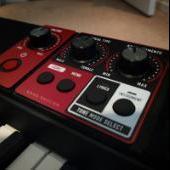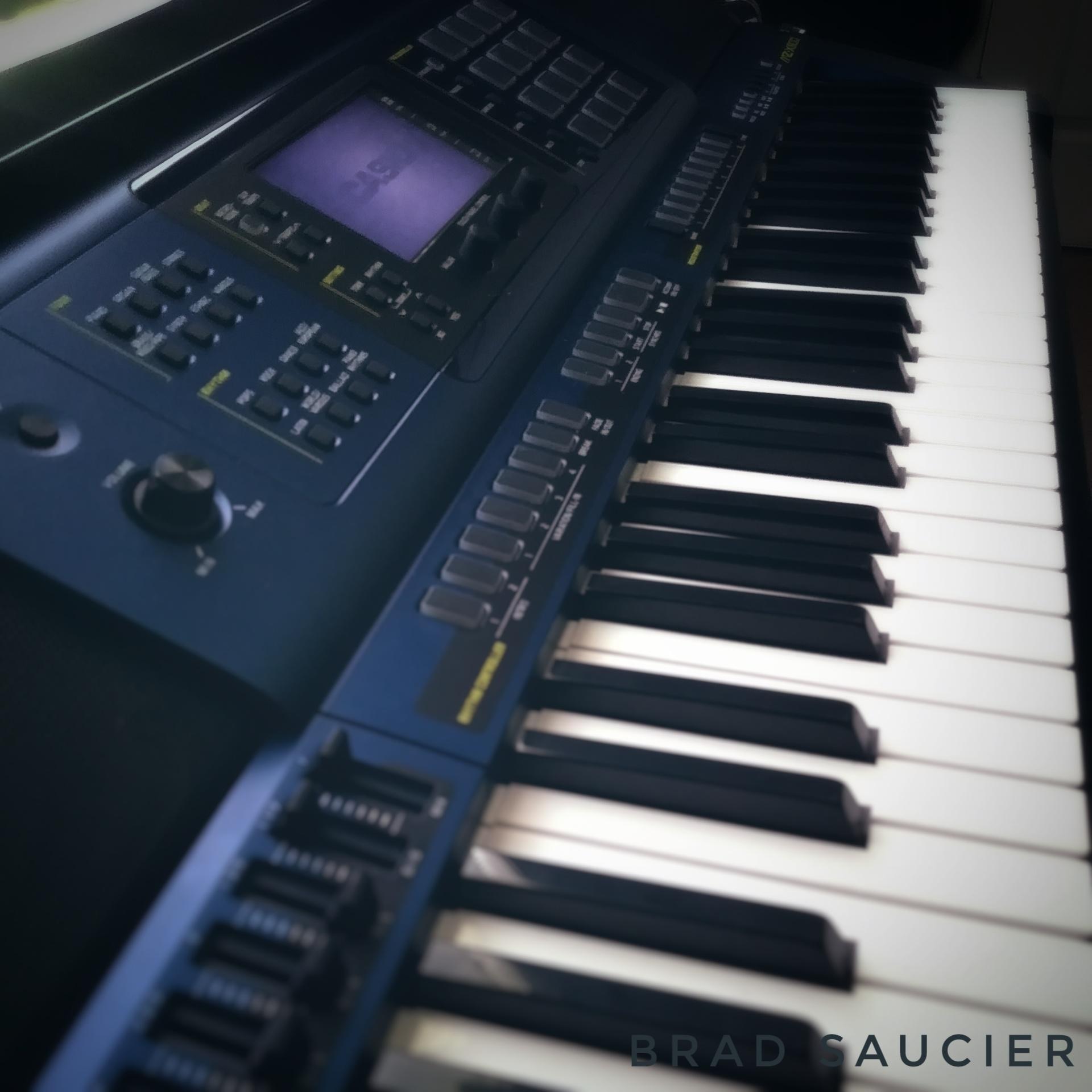-
Posts
8,722 -
Joined
-
Last visited
Content Type
Profiles
Forums
Downloads
Everything posted by Brad Saucier
-
You may not like to use Bluetooth since it can potentially add a delay to the sound.
-
Glad to see you're still hanging out with us. My PX-5S is still the center of my keyboard world. It's true that it's been so good that nothing (still, to this day) can entirely replace it. I think we'll eventually see Casio offering a replacement. I'm kinda glad it has taken this long. Not only does it show how well the 5S has held up over time, it means we have a chance to see an all new stage piano with some of the great sound programming that has appeared in other Casio products released in recent years. I know many like to use VST instruments, but I'm very much a built-in-sounds type of guy. The chance at a significantly improved preset library of tones is a very tempting reason to update my PX-5S. I'm still hopeful and waiting for that chance.
-
I think it mostly depends on what you need specifically in your case. Registrations are good for storing complex setups like splits and layers. The user F buttons can be good as shortcuts to your favorite tones. Registrations setups are 4 per bank. So each registration in a bank is unique with the tones and settings you configured when saving it. Of course there are multiple banks, so yes this will take some navigation to move through all of them. I think the user F buttons may be what you're really looking for, a "favorite" tones sort of thing.
-
You would need an audio input jack on your computer. This is usually a 3.5mm stereo mini jack. Does it have one? If not, you'll need to add a USB audio interface. The interface will allow the headphone output of the keyboard to connect to an input on the interface. That in turn sends audio into the computer through USB. Your headphones can be connected to the computer or audio interface (if it has a headphone output of it's own). Software configuration for this may be tricky depending on how you're communicating with your tutor. It depends if the software will allow you to select the audio interface as a source. I'm not familiar enough with Mac computers to give deeper insights to that. Hopefully this helps.
-

Pattern Sequencer for live looping
Brad Saucier replied to James Wylie's topic in WK-7500/7600 - CTK-7000/7200
You could pre-record some user rhythms then possibly use the mixer to bring different parts in and out as it plays back. I've done it on other models in the past. The WK should be able to do that. -

Smartphone software for PX-S1000 is now CASIO MUSIC SPACE.
Brad Saucier replied to Rasputin1963's topic in Privia PX-S Series
Open "Piano Remote Controller". You will see "Sync Settings" with an option to "load app settings to instrument", or "load instrument settings". Select "load app settings to instrument". The app can store up to 4 different setups for send to the piano as desired. More info from the user manual here. -

Music Playback for Casio PX-S7000 Privia
Brad Saucier replied to abood's topic in Privia PX-S7000 / PX-S6000 / PX-S5000
MIDI files and audio files stored on a USB flash drive can be played without loading them into keyboard memory. Create a folder on the USB drive named MUSICDAT and copy your files to that folder. Note that supported file types are standard WAV and MP3 audio files and standard MIDI files. Once copying is completed, move the flash drive from your computer to the USB port on your piano. The piano will scan the drive. After "mounting" is no longer displayed, you can play the files. Press the play stop button and then the song type button (F4 STYPE). Use the ring to select MIDI or Audio USB. Use the ring to select a song title and press the play button. For more details, see the PX-S7000 user manual page EN-101. Note that audio can also be streamed to the piano wirelessly through Bluetooth with the WU-BT10 adapter from external devices. -

How to connect Ap470 to audio interface
Brad Saucier replied to Ton's topic in Celviano AP-x70 / Privia PX-x70
Headphone jacks are stereo. You'll probably want to use a stereo TRS cable for the headphone jack. -

Looking for custom tone settings for sounds
Brad Saucier replied to James Wylie's topic in WK-7500/7600 - CTK-7000/7200
We don't have anything like that. This section is the only one specifically about the WK models. You could watch YouTube videos about general synthesizer techniques. Some of that can apply to the WK. -

Privia PX150 not accepting .mid files
Brad Saucier replied to Midicasio's topic in General Privia Discussion
The file size may be too big for keyboard memory. If you rather play the file using the DAW, you should be able to find MIDI device preferences for IN and OUT (Casio USB MIDI) somewhere in there, as long as the piano is in MIDI mode, not USB mode. -
Cakewalk by Bandlab is free. It comes with some free instruments.
- 2 replies
-
- tones missing
- cdp-s350
-
(and 2 more)
Tagged with:
-
This keyboard wasn't made with that in mind. Loopers are live performance tools for recording and performing with loops in real time. Auto accompaniment is a pre-recorded backing track that loops. I have yet to see any auto accompaniment system that can be used as a live looper. It's a great keyboard with a lot to offer along with the CT-S1000V, with features that are hard to find (if not impossible) in this category. It has sampling ability which can be used for some pretty creative things. It also has assignable knobs for controlling effects and basic synth parameters in real time. It has an extensive DSP effects system that's editable for creating new sounds. The preset sounds and drum patterns are very inspiring as they are. It's great to connect up to a DAW and lay down some tracks with these sounds. The onboard recorder is meant to be used as a sketch pad for capturing creative ideas that may occur in the middle of nowhere, as often happens with songwriting. It doesn't offer much in the way of editing on the keyboard, since exporting the songs to a computer for further work is usually all that's needed. The CT-X3000 and 5000 are available to fill the needs of more complex song recording and editing on the keyboard itself.
-
CDP-S350 does not support installation of new tones. You can however use your piano as a USB MIDI controller to play software instruments on a computer or mobile device.
- 2 replies
-
- cdp-s350
- tones missing
-
(and 2 more)
Tagged with:
-
I'm glad you were able to resolve it and have one that meets your expectations now. As far as the pedal unit cable, I would look around for a standard 6 pin mini DIN PS/2 type extension cable (same port commonly used in the past for a computer mouse). I can't personally confirm this, but it appears that would be compatible with the pedal unit cable. As far as posting limits, that is a temporary condition for all new members to help us keep out spammers. Keep posting and you'll receive full member status soon.
-
We do have a rhythms database in the downloads section. https://www.casiomusicforums.com/index.php?/files/category/68-rhythms/
-
Thank you. I was hoping seeing it would reveal something words couldn't convey. Unfortunately nothing jumps out at me. The only things that comes to mind is formatting this new flash drive yourself with a Windows PC if you haven't already done that.
-
You could use YouTube to host the video and attach it here.
-
Press the mixer button. This model has a 32 part sound engine (2 groups of 16 parts labeled A and B groups), all adjustable from the sliders. You can select which parts are currently controlled by sliders using the buttons left of the sliders, written below with what those buttons will toggle. Accompaniment parts are 9-16 group A.
-

Downloadable custom files/user created sounds
Brad Saucier replied to James Wylie's topic in General CTK / WK / LK Discussion
That site would be this one, in our downloads section if any has been shared. I'm not sure what's there for your model, but everything is arranged by model in that section. https://www.casiomusicforums.com/index.php?/files/ -
Agree with Mike, its normal and nothing to worry about. That actually sounds pretty quiet to me. The sound you do hear is just part of how a hammer action works. They also bounce some, which is normal. Carry on playing your new PX-S7000 and congrats! It's a fine instrument.
-
I'm not sure what to add that hasn't been covered already. It's possible the flash drive port is damaged in some way. It shouldn't be, but that slim chance is there. Could you possibly attach a video of what you're seeing, just out of curiosity.
-
MZ-X300 and MZ-X500 are the only recent models capable of loading and editing MIDI files with event level editing. Unfortunately these are difficult to find at this point. PX-560 can load MIDI files. It offers a header data overwrite function for making mixer changes, but does not have an event editor like the MZ-X series to delete or add individual events. Program change events in MIDI files would not be be accessible for editing. Personally I think DAW software is the easiest way to go.
-
That's very unusual. How long have you had your 560? Is it new or used?
-

How to start/stop, start/stop drums of a song?
Brad Saucier replied to Lurch's topic in WK-6500/6600 - CTK-6000/6200
You'll probably want to learn more about rhythms and editing them. Each rhythm has several elements (intro, ending, fill, variation 1 and 2). Each element can be edited or recorded new. One of them can be a blank loop. With the song sequencer, recording a rhythm is done with the system track in real time. You can switch the patterns as you go to build the song you want. -

Casio Data Editor (or any similar apk) for Android?
Brad Saucier replied to Arczii's topic in Privia Pro PX-5S
The PX-5S data editor is only available for Windows or Mac operating systems. https://support.casio.com/en/support/download.php?cid=008&pid=58


